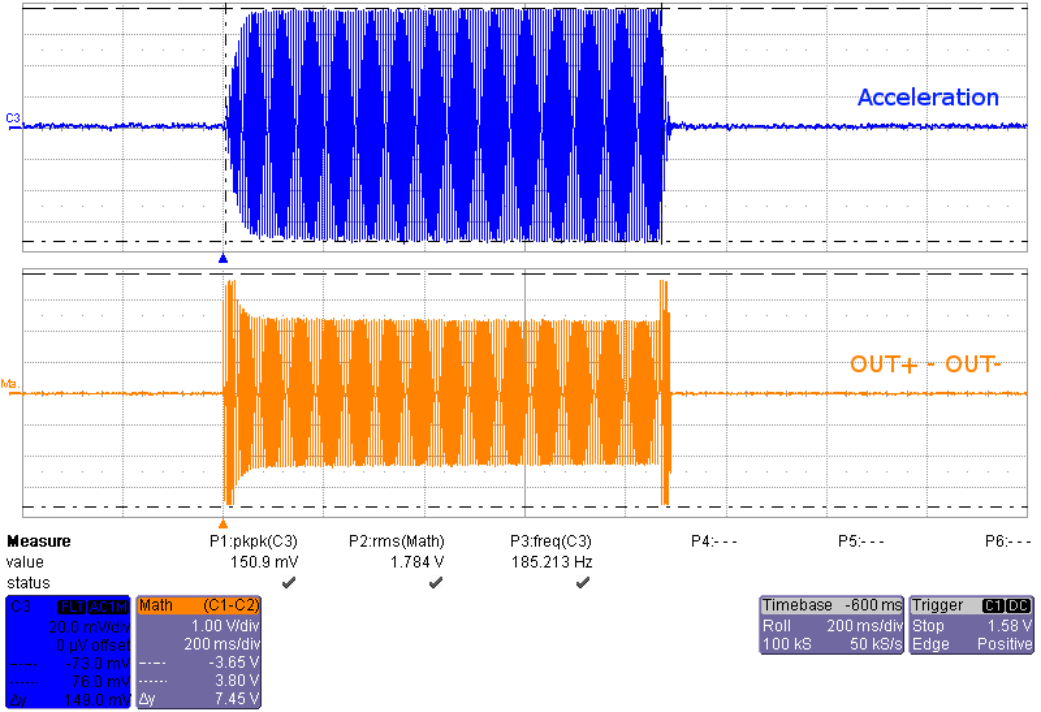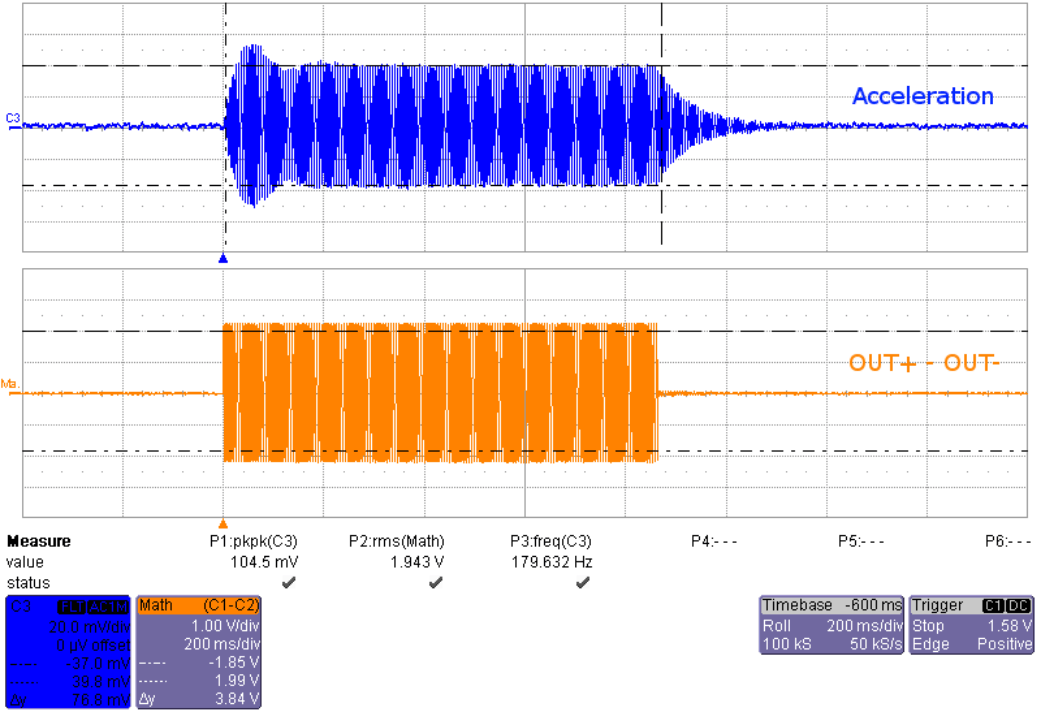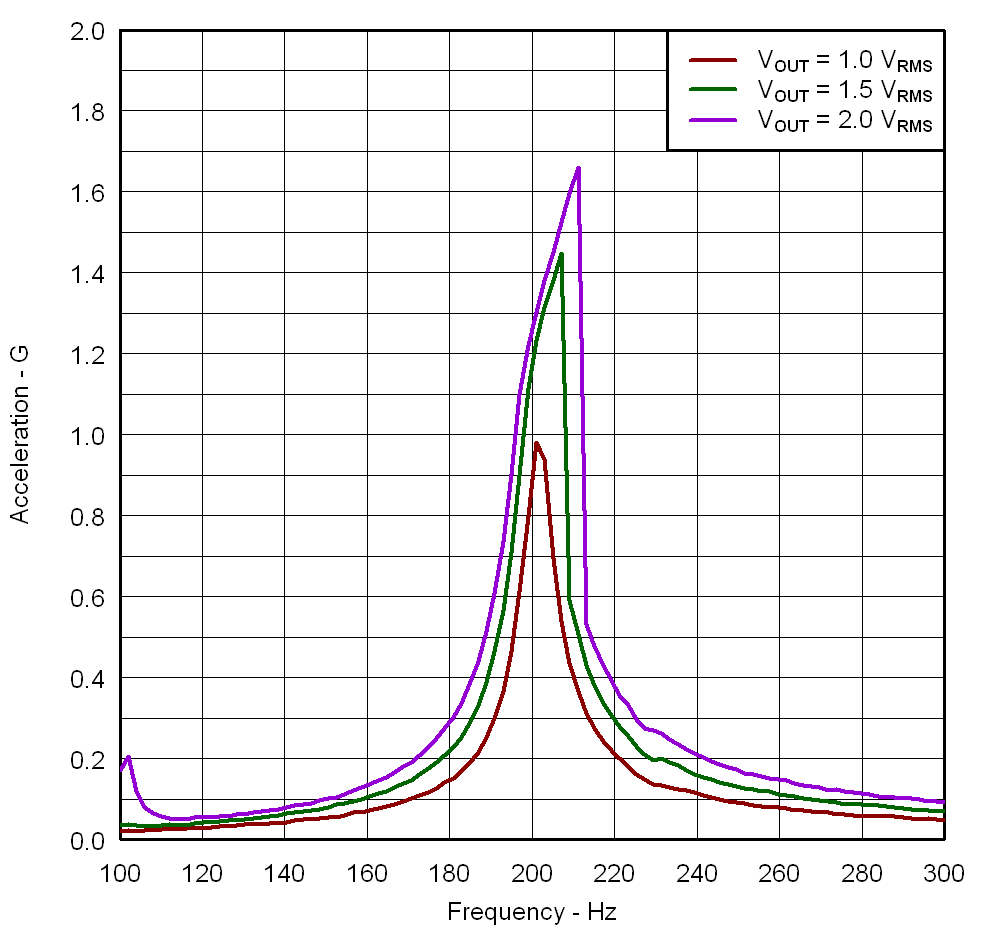SLOU432B December 2015 – December 2021 DRV2625
2.2.4 Auto-Resonance Tracking
Figure 2-9 and Figure 2-10 below showcase the advantages of the Smart Loop Architecture which includes auto-resonance tracking, automatic overdrive, and automatic braking. The two images below show the difference in acceleration between LRA auto-resonance ON and LRA auto-resonance OFF. Notice that the acceleration is higher when driven at the resonant frequency. The auto-resonance ON waveform has 1.32 G of acceleration and the auto-resonance OFF waveform has 0.92 G of acceleration. The auto-resonance ON waveform has 43% more acceleration.
 Figure 2-9 LRA Auto-Resonance ON Waveform (Button 1)
Figure 2-9 LRA Auto-Resonance ON Waveform (Button 1) Figure 2-10 LRA Auto-Resonance OFF Waveform (Button 2)
Figure 2-10 LRA Auto-Resonance OFF Waveform (Button 2)The reason for higher acceleration can be seen in the acceleration versus frequency graph below. The LRA has a very narrow operating frequency range due to the properties of a spring-mass system. Furthermore, the resonance frequency drifts over various conditions such as temperature and drive voltage. With the Smart Loop auto-resonance feature, the DRV2625 dynamically tracks the exact resonant frequency to maximize the vibration force.
 Figure 2-11 Acceleration Versus Frequency
Figure 2-11 Acceleration Versus Frequency